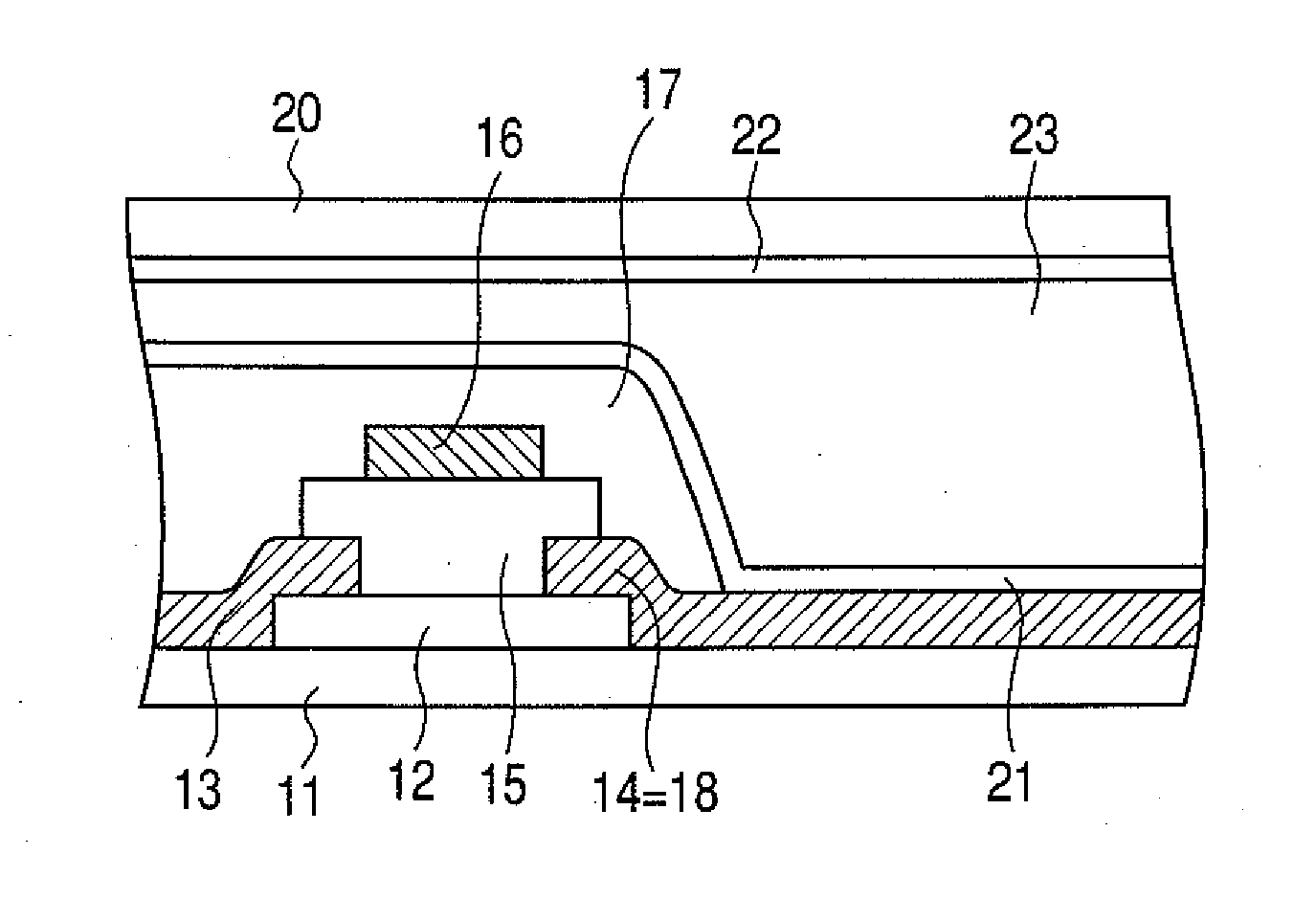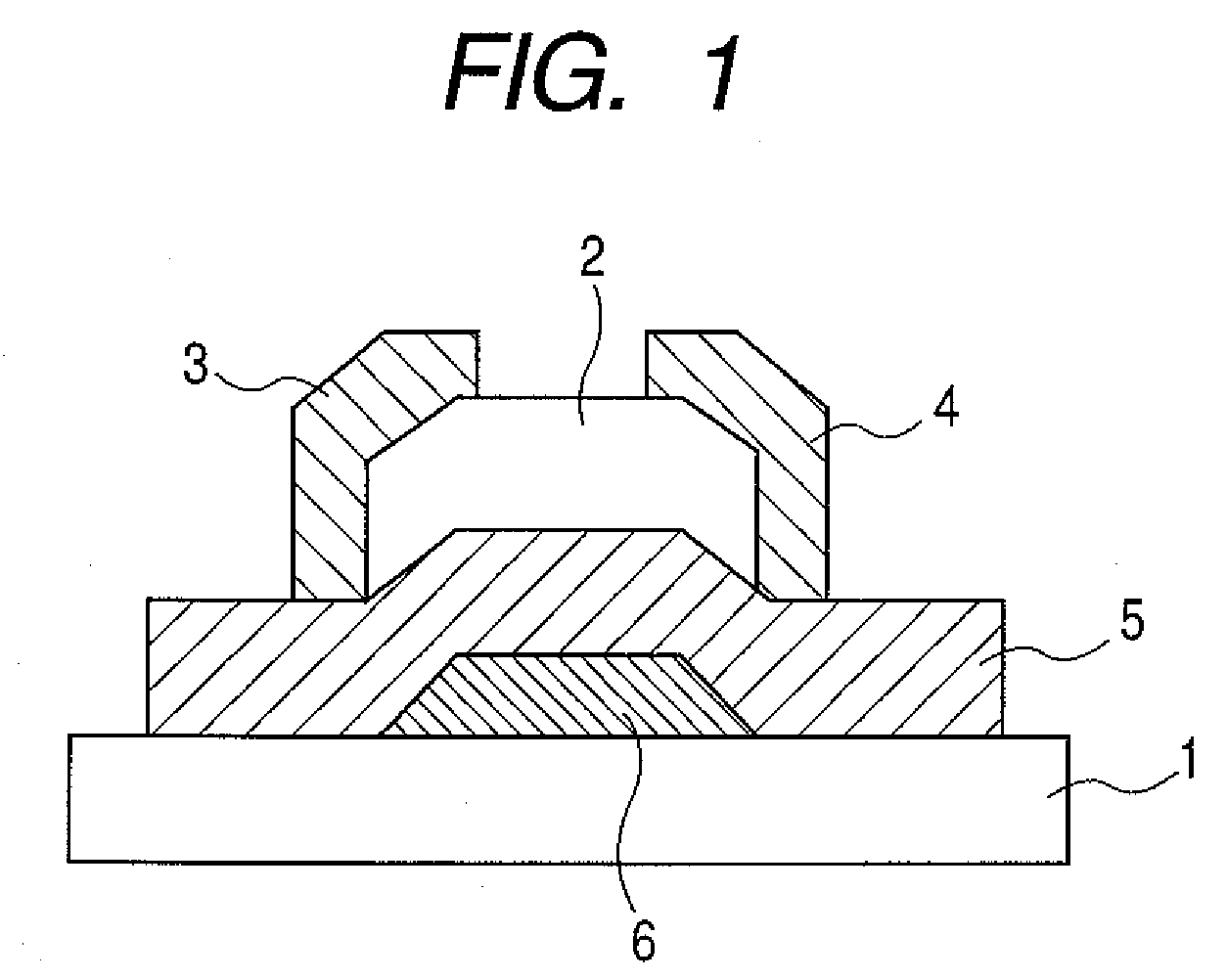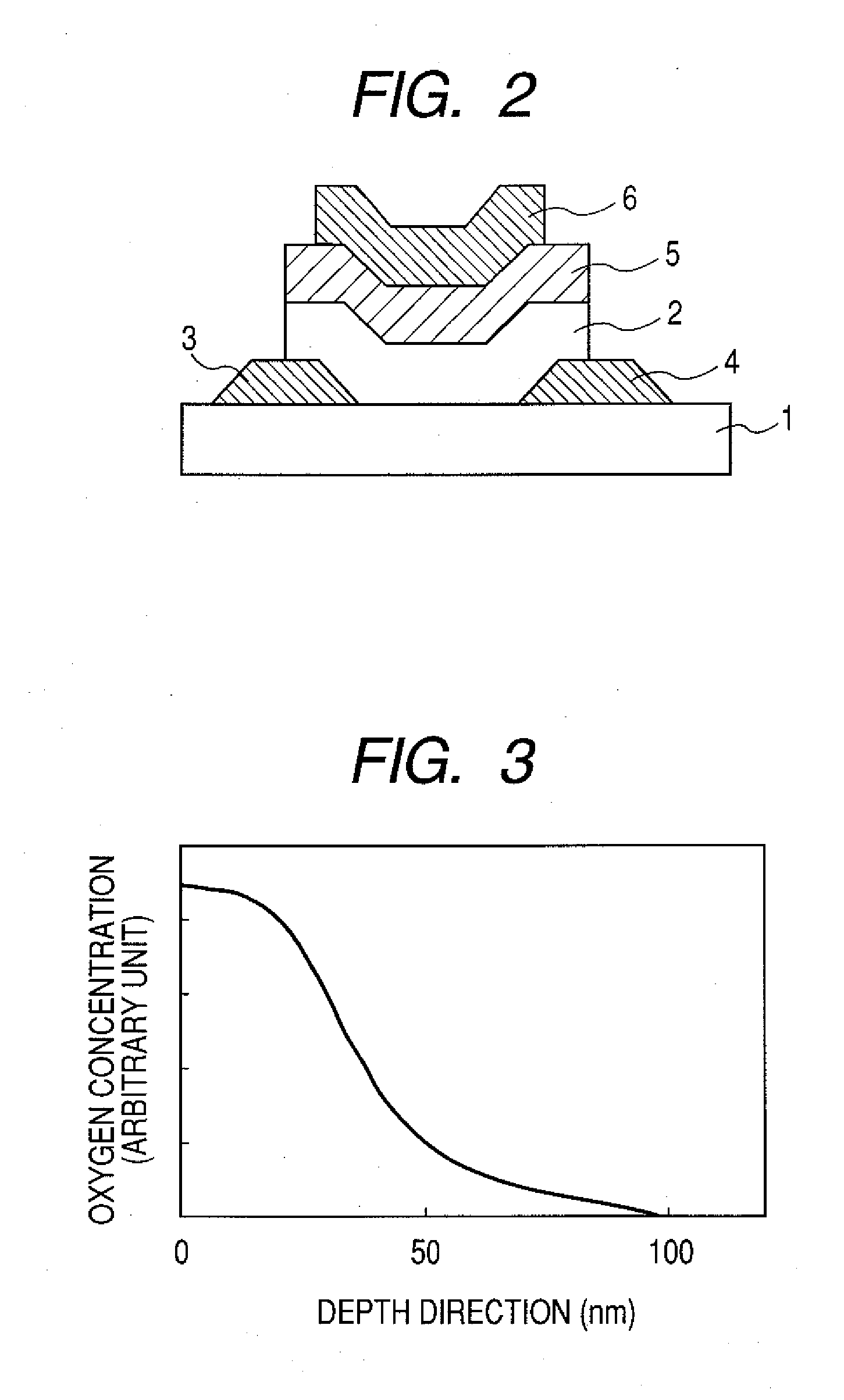Thin-Film Transistor and Display Device using Oxide Semiconductor
a thin film transistor and display device technology, applied in the direction of semiconductors, semiconductor devices, electrical appliances, etc., can solve the problems of difficult to achieve normal-off operation of tft, difficult to make electric conductivity small, and difficult to enlarge the on/off ratio of transistors, etc., to achieve good interface characteristics and produce thin film tft.
- Summary
- Abstract
- Description
- Claims
- Application Information
AI Technical Summary
Benefits of technology
Problems solved by technology
Method used
Image
Examples
example 1
[0062]In this example, an inversed staggered (bottom gate type) MISFET element shown in FIG. 1 was produced so that an amorphous silicon oxynitride for forming a gate insulating film had a distribution of an oxygen concentration in a thickness direction thereof in which the oxygen concentration became high in the side of the interface with an oxide semiconductor. First of all, a gate terminal having a thickness of Ti:10 nm / Au:100 nm was formed on a glass substrate using a photolithographic method and a lift-off method. Furthermore, an insulating layer of a-SiOxNy was formed in a thickness of 100 nm thereon by a sputtering method. At that time, an Si2N3 target was used for a sputtering target and a mixed gas of Ar / O2 was used as a sputtering gas. The oxygen concentration of the mixed gas of Ar / O2 was changed to give the above distribution of an oxygen concentration to the insulating layer. Then, an amorphous oxide semiconductor film to be used as a channel layer was formed in a thick...
example 2
[0066]In this example, a staggered (top gate) type MISFET element as shown in FIG. 2 was produced. First, a film having a thickness of Ti:5-nm / Au:40-nm were stacked on a glass substrate 1, and a drain terminal 4 and a source terminal 3 were formed by a photolithographic method and a lift-off method. A 30 nm-thick amorphous In—Ga—Zn—O film having a metal composition ratio of In:Ga:Zn=1.00:0.94:0.65 which was used as a channel layer 2 was formed by a sputtering method. Furthermore, a 100 nm-thick insulating layer 5 of a-SiOxNy was formed thereon by the sputtering method. At that time, an Si2N3 target was used for a sputtering target and a mixed gas of Ar / O2 was used for a sputtering gas. The distribution of an oxygen concentration was given to an insulating layer by changing the oxygen concentration of the mixed gas of Ar / O2 so that the oxygen concentration of the insulating layer became high in the side of the interface with an oxide semiconductor. Moreover, a film having a thickness...
example 3
[0069]In this example, a display device using a TFT as shown in FIG. 7 will be explained. Production process of the TFT is the same as that in Example 2. In the above-described TFT, a short side of an island of an ITO film for forming a drain electrode is extended to 100 μm, the extended 90-μm portion is left, and after securing wiring to a source electrode and a gate electrode, the TFT is covered with an insulating layer. A polyimide film is coated thereon, and the resultant is subjected to a rubbing process. On the other hand, similarly, a plastic substrate having an ITO film and a polyimide film formed thereon and subjected to a rubbing process is prepared. This substrate is made to face the above prepared substrate having the above-described TFT formed thereon with an gap of 5 μm, and a nematic liquid crystal is injected to the gap. A pair of polarizing plates is further provided on both sides of this structure. Here, when a voltage is applied to the source electrode of the TFT ...
PUM
 Login to View More
Login to View More Abstract
Description
Claims
Application Information
 Login to View More
Login to View More - R&D
- Intellectual Property
- Life Sciences
- Materials
- Tech Scout
- Unparalleled Data Quality
- Higher Quality Content
- 60% Fewer Hallucinations
Browse by: Latest US Patents, China's latest patents, Technical Efficacy Thesaurus, Application Domain, Technology Topic, Popular Technical Reports.
© 2025 PatSnap. All rights reserved.Legal|Privacy policy|Modern Slavery Act Transparency Statement|Sitemap|About US| Contact US: help@patsnap.com



